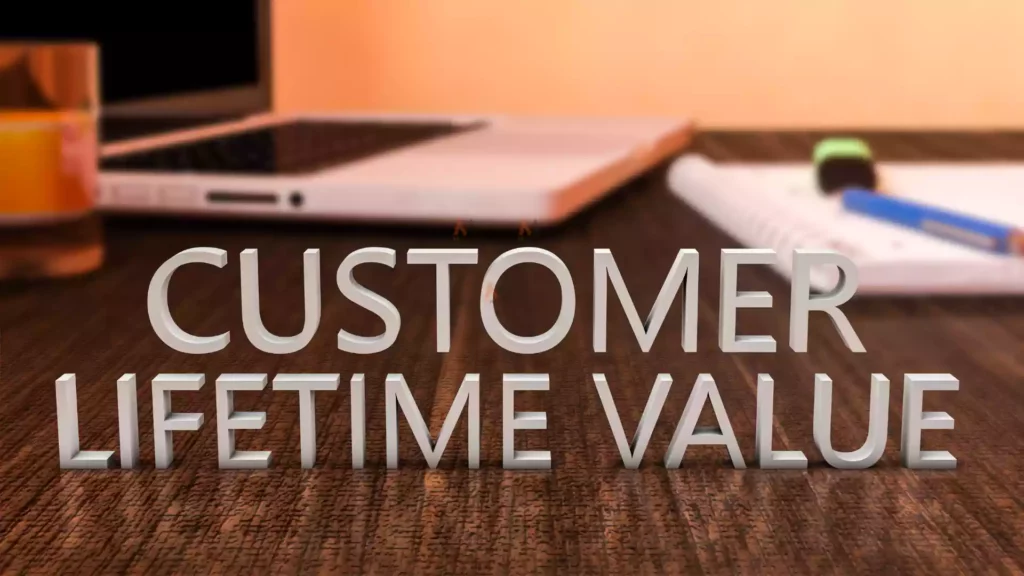What is the Customer Lifetime Value and How can It Be Measured?
The customer lifetime value (CLV) measures how much profit you can expect from a customer over their lifetime.
It’s critical for any business, especially eCommerce companies, to calculate this accurately so they can make sound decisions on marketing expenses and products. Let’s explore how to calculate CLV and find out why it matters!
You want to know how much profit you can expect from a customer over their lifetime, but calculating CLV is pretty complicated.
The good news is that plenty of free tools and calculators are available online, making it easier to calculate your customer’s Lifetime Value! One such tool is the Google Analytics Goal Funnel Visualization Tool. It is the best for measuring CLV.
This tool will show you where customers drop off in the buying process so you can better understand what they’re looking for and why they might not be converting.
Calculating Customer Lifetime Value (CLV) accurately is critical for any company, especially eCommerce companies, which must make sound decisions on marketing expenses and products. Luckily, many great resources are available online that can help with this!
The Google Analytics Goal Funnel Visualization Tool helps you see where customers drop off in the buying process, allowing you to better understand what they’re looking for and why they might not be converting.
This tool is just one of several available online tools that make it easier than ever to calculate your customer’s lifetime value!
CLV measures how much profit you can expect from a customer over their lifetime. It’s critical for any business, especially eCommerce companies, to calculate this accurately so they can make sound decisions on marketing expenses and products. Let’s explore how to calculate CLV and find out why it matters!
With the definition of customer lifetime value, let go calculate it.
How to calculate CLV

There are a few different ways to calculate the CLV, but the most common method is to use the following equation:
CLV = Average Order Value (AOV) x Average Lifetime of a Customer (ALC)
For example, if a customer’s average order value is $100 and is expected to stay a customer for an average of 3 years, their CLV would be $300 ($100 x 3 years).
When calculating CLV, you can consider other factors, such as how likely a customer is to return and how much profit you can expect from them during each visit. You can also use different mathematical models, such as the Bass diffusion or the Hyperbolic models.
The bottom line is that the CLV calculation will vary from business to business and may even differ for each product or customer. You’ll need to include any factors contributing to a better understanding of your customer’s value. 10 Most In-Demand Types of SEO Services to Focus On in 2025
There are several types of variables you can consider when calculating CLV:
- Average Order Value (AOV)
- Length of Customer Lifetime (CL)
- The rate at which customers purchase in the future(customer lifetime value retention rate)
- Total profit per customer over their lifetime
The last factor is not always considered when calculating CLV, but it can greatly impact your customers’ profitability.
You’ll want to consider this variable if you make less profit on average per order but still have a high repeat customer base that spends money with you time after time.
Calculating net profit contribution per customer or annual recurring revenue per customer is a great way to estimate the total profit you can expect from each customer.
The net profit contribution per customer is calculated by subtracting the cost of goods sold from each order and any delivery charges or tax expenses to get the average margin for all orders.
Then, you can simply take that number and multiply it by the number of times a year the typical customer purchases from you (your annual order volume) to get your net profit contribution per customer.
📊 Marketing Needs & Budget Estimator
On the other hand, the annual recurring revenue is simply the total revenue you receive from a customer each year. You’ll need to calculate this number by multiplying your average order value by 12 (or however often they purchase).
Once you have both numbers calculated for an individual customer, you can subtract your net profit contribution from your annual recurring revenue, giving you the total profit you can expect from them over their lifetime.
Calculating CLV is all good, but why should you even care?

The answer is simple: it allows you to make better business decisions! You can forecast how profitable or unprofitable customers are, which will help you decide whether or not to invest in promotions and sales.
You’ll also be able to determine your most profitable channels. For example, is it more cost-effective to focus on paid social media campaigns or affiliate marketing? Should you spend money on email marketing automation or lead generation?
Calculating CLV can help you figure out all this and more, making it an extremely valuable tool for any business to have in its arsenal.
CLV is a way of measuring the value of a particular customer or group of customers to your business throughout their entire history as paying customers.
Understand the importance of CLV.

The CLV is an important metric for any business. It tells you how much profit you can expect from a customer over their lifetime.
This number is critical for businesses to know, especially eCommerce companies, as it can help them make sound decisions on marketing expenses and products.
Identify where to find CLV information.
There are a few places you can find CLV information. Sometimes it’s blended with predictive customer value.
The first is by looking at your customer data. You can find out how much profit each customer has generated in the past and how much they’re worth on average. This information will give you a good starting point for estimating your CLV.
Another way to calculate CLV is to use predictive analytics.
This approach uses historical data to predict how much profit a customer will likely generate. This information can be helpful for businesses that want to ensure they’re not underestimating their CLV.
Finally, you can also use surveys or interviews to gather information about CLV. This approach can help you understand how different customer segments value your product.
However, keep in mind that this method can only provide an estimation—it will not give you 100% accurate results.
Use CLV to make your business more profitable.

Once you’ve identified the average customer’s worth, use this information to decide on marketing expenses and products.
Knowing how much customers are worth on average will help you make sound marketing decisions. Use this info to calculate your CLV, then use that information to make smarter decisions about marketing expenses and products.
Knowing that customers are worth an average of $86,400 over their lifetime, you can spend upwards of $5,000 using ads to acquire one.
However, if you see that your CLV is typically much lower than this number, it may be better to use other growth strategies, such as determining the quality of leads before bringing them in.
Why does your CLV matter?
Every business calculates CLV somehow, whether using historical data or predictive analytics. Getting an accurate estimate of how much profit you can expect from a customer over their lifetime is the key to making the right marketing decisions for your business.
Calculate your company’s current CLV.

To calculate your company’s current CLV, examine your customer data and find the average profit each customer has generated in the past.
Once you have this number, multiply it by the number of active customers. This will estimate how much profit you can expect to generate from your current customer base.
Remember that this number is just an estimate – your CLV may be higher or lower than this figure. However, it’s a good starting point for understanding how much profit you can expect from your customers.
Find out how to increase your company’s CLV with these five tips!
1. Always be looking for ways to improve customer retention rates.
One of the easiest ways to increase your company’s CLV is to improve customer retention rates. If you can keep customers around longer, they’re more likely to generate more profit for your business.
You can improve retention rates in several ways, such as offering great customer service, having a loyalty program, and providing targeted discounts.
2. Offer incentives for customers to refer their friends.
Another way to increase your company’s CLV is by offering incentives for customers to refer their friends.
You’ll likely see increased profits if you can get more people to become customers.
You can offer customers a discount for referring their friends or have a referral program that gives new customers additional perks.
For example, you might give your existing customers a special deal for referring a friend who makes their first purchase within a specific period.
3. Use predictive data to determine the most valuable products to your customer base.
When increasing your company’s CLV, focusing on products that will deliver the most profit for your business is important.
Predictive analytics lets you get an idea of what type of product you should offer. By looking at current trends and purchasing data, you can better understand which products will likely be profitable for your business.
4. Increase your prices.
One way to increase your company’s CLV is to increase the price of your products. In some cases, customers will pay a higher price for a product if they know it’s high quality or comes from a reputable brand.
If you have items in your inventory that aren’t selling as well as others, consider increasing their retail price to see if this strategy will help you increase your overall profits.
5. Market directly to high-value customers.
Finally, you must be able to identify who your high-value customers are and market directly to them.
This way, you can focus on reaching these specific people with ads or emails that will be most relevant to them. On the other hand, this approach helps you avoid spending too much on marketing to customers who won’t generate a high return on your investment (ROI).
You’re finished!
Thank you for reading about calculating your CLV and why it matters to your business. The definition of customer value is in the eyes of the customer.
Conclusion
Calculating your company’s CLV is important in understanding how much profit you can expect from your customers. Measuring customer lifetime value is vital.
Using our tips, you can find ways to increase your CLV and make more money from your current customer base.
Remember that these are just a few things you can do to improve your CLV. Experiment with different strategies to see what works best for you. Thanks for reading!
Most businesses don’t know how much profit they can expect from customers over their lifetime.
Without this information, making sound decisions on marketing expenses and products is difficult.
By calculating the CLV, you can make informed decisions that will impact your bottom line. Let’s explore how you can do this!
Marketing Agency ROI Forecast Calculator
Enter your budget and current sales to calculate your current ROI. Then select services to forecast your ROI uplift. Powered by MatrixLabX NeuralEdge.
Powered by MatrixLabX NeuralEdge — AI Marketing That Thinks Ahead.
Matrix Marketing Group can help with analytics and reporting.
Matrix Marketing Group is a company that specializes in providing analytics and reporting services.
If you need help calculating your company’s CLV, Matrix Marketing Group, based in Denver, CO, can provide you with the tools and data you need to get accurate results.
In addition, Matrix Marketing Group can help you track customer engagement and loyalty levels to assess the effectiveness of your marketing efforts.
General FAQs
What is customer lifetime value?
The customer lifetime value (CLV) measures how much profit you can expect from a customer over their lifetime.
It’s critical for any business, especially eCommerce companies, to calculate this accurately so they can make sound decisions on marketing expenses and products. Let’s explore how to calculate CLV and find out why it matters!
What are the benefits of calculating your CLV?
There are several benefits of calculating your customer lifetime value (CLV). First, it helps you understand how much profit you can expect from a customer over their lifetime. This information is essential for making sound decisions on marketing expenses and products. Second, it allows you to focus your marketing efforts on customers who will likely generate a high return on your investment (ROI). This approach helps you avoid wasting time and money on people who aren’t likely to be profitable for your business. Finally, it enables you to identify which products will most likely be profitable for your company. You can make informed decisions about which items to offer your customers using predictive analytics and other data.
Why is customer lifetime value important?
As an entrepreneur, you want to know that your business generates healthy profits. Understanding how much profit you can expect from a customer over their lifetime will help you make informed decisions about products, marketing expenses, and more. This allows you to identify which products are likely to be profitable. You don’t want to calculate CLV because it’s the only way to know if the ROI is high.
How do you calculate customer lifetime value?
Customer Lifetime Value (CLV) is calculated by dividing your total profit by the customer’s total lifetime spending. The following formula can help you do the math: (total profit from one customer over their entire lifetime) / (total money spent by this same customer). Customer lifetime value measures how much money one average customer will spend on an organization’s products or services over their lifetime, so this number needs to be large enough to justify the company’s investment.

